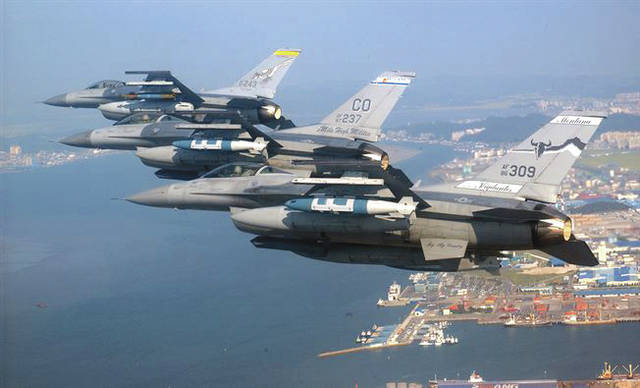
WRIGHT-PATTERSON AIR FORCE BASE — The F-16 Fighting Falcon is a fourth-generation, multi-role fighter built for the US Air Force during the mid-1970s, with plans to continue the program through the late 2040s.
The F-16 System Program Office, located at both Hill Air Force Base and Wright-Patterson Air Force Base, is responsible for development and sustainment of capabilities throughout the lifecycle of the aircraft. The F-16 SPO, the 309 Software Maintenance Group, the Air National Guard Air Force Reserve Test Center and the Air Force Test Center partner to develop and field software capability upgrade and M-series operational flight programs. The OFPs continually deliver new software capabilities and integrate new hardware onto the F-16.
In November 2016, SCU 9 was released to the field and provided upgrades to 335 Block 25/30/32 F-16s. The SCU 9 production efforts involved 260, 309 SMXG software maintenance personnel who modified 11, F-16 critical aircraft avionic systems. The $211 million program fielded 82 modernization enhancements, reducing pilot workload and decreasing the kill chain length by 10 percent. SCU 9 also enhanced close air support weapons accuracy, improving projected mission effectiveness rates by 15 percent.
Among the major capabilities fielded was the integration of a new targeting pod, providing high-definition video directly to the pilot. Another major capability provided pilots with a new datalink system, improving ground force communication for situational awareness.
The SCU 9 team also redesigned the control process for a new radio modification. The upgrade vastly improves beyond-line-of-sight communication functions for 204 combat aircraft. The AATC, in support of the SCU 9 team, provided flight test support more than 3,037 sorties, 4,527 flight hours and 20 operational deployments.
Within the last year, the M-series OFP team managed a $455 million budget, including 129 military, civilian and contractor personnel, and has just recommended fielding 67 new warfighter capabilities this March.
Their innovative approach to combining developmental and operational test over the entire test enterprise realized a $230 million savings for the Air Force. The OFP cadre worked through several challenges while managing eight automatic ground collision avoidance system program contracts worth $88 million.
They helped diagnose and correct a critical AGCAS deficiency, leading to four pilots’ lives being saved due to the revolutionary ground-avoidance technology. Furthermore, the team responded to the Active Electronically Scanned Array Joint Urgent Operational Need radar program’s test schedule requirements with a $128 million OFP addition. They were able to formulate a cohesive plan to facilitate the AESA program’s complex fielding timeline while implementing two Federal Aviation Administration mandates.
One of the M-series OFP team’s major accomplishments was formulating and executing its first-ever organic software development effort for Block 40 and 50, F-16s. The new structure has engineers and program managers measuring cost, schedule and performance at Wright-Patterson and Hill AFB, and it established software development and testing for these aircraft within the 309 SMXG.
The program just released its latest M-Series software using this new process. The new strategy has already saved the Air Force an estimated $45.5 million and is postured to save up to an estimated $60 million with its first release.
The established partnerships, coordination, flexibility and adaptability of the F-16 team ensures a rapid response to warfighter capability requirements by delivering SCU and M-series OFPs every two years.
By leveraging resources across the Air Force, the combined F-16 team provides the latest technology capabilities on an extremely capable platform with the lowest fighter cost per flying hour.


